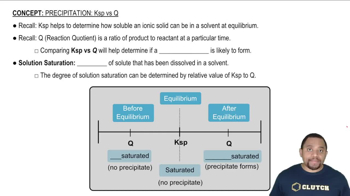Here are the essential concepts you must grasp in order to answer the question correctly.
Band Gap
The band gap is the energy difference between the valence band and the conduction band in a solid material. It determines the electrical conductivity of the material; a small or nonexistent band gap allows electrons to move freely, making the material a good conductor. In contrast, a large band gap typically indicates an insulator or semiconductor.
Recommended video:
Intepreting the Band of Stability
Conductors vs. Semiconductors vs. Insulators
Materials are classified based on their ability to conduct electricity. Conductors, like metals, have little to no band gap, allowing electrons to flow easily. Semiconductors, such as silicon, have a moderate band gap that can be overcome under certain conditions, while insulators have a large band gap, preventing electron flow under normal circumstances.
Recommended video:
Ksp vs Q in Precipitation
Metallic Properties of Copper
Copper (Cu) is a metal known for its excellent electrical conductivity due to its very small or nonexistent band gap. In metallic solids, the electrons are delocalized, allowing them to move freely throughout the structure, which is why copper is often used in electrical wiring and components.
Recommended video:
 Verified step by step guidance
Verified step by step guidance


